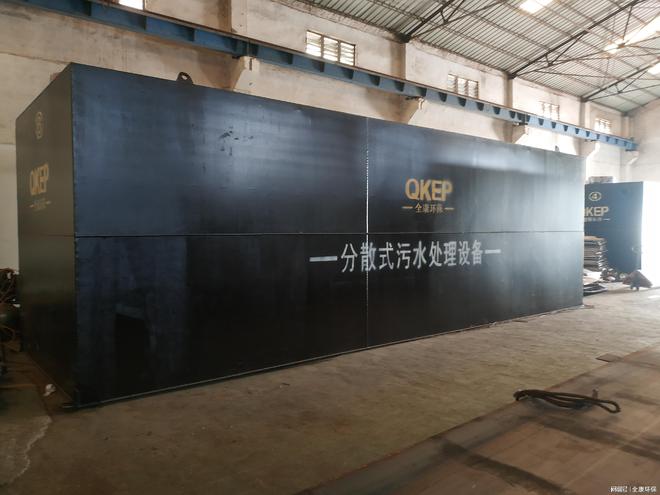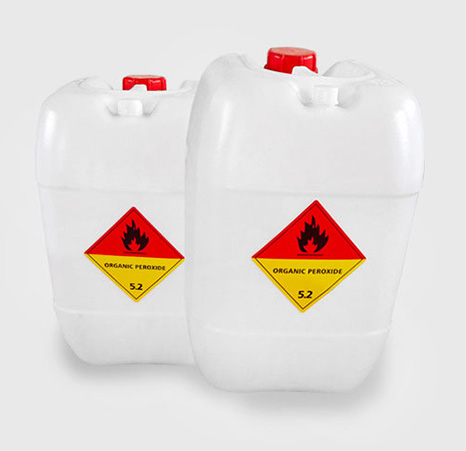Advanced oxidation technology in waste water degradation of organic pollutants
At present, traditional biological treatment technologies are mainly used for the organic pollutants in wastewater. However, the effectiveness of some wastewater containing high concentration and stable chemical structure of organic pollutants is not ideal, such as pesticides, papermaking, printing and dyeing wastewater. The organic pollutants in wastewater have high concentration, high toxicity, complex composition, and mostly contain stable aromatic structures that are difficult to degrade. Their biodegradability is poor, making disposal difficult, Therefore, the removal of organic pollutants from refractory organic wastewater (BROW) has become a difficulty in the field of wastewater treatment.
In recent years, a large number of discussions have been carried out on the treatment methods of refractory organic wastewater at home and abroad. Among them, compared with traditional water treatment methods, Advanced oxidation process (AOPs for short) are widely concerned because of its advantages such as good treatment effect, fast speed, no secondary pollution, wide application range, etc. Advanced oxidation water treatment methods generally have the following characteristics: a. using a large number of vivid hydroxyl radicals with strong oxidation ability as oxidants, which can induce chain reaction reactions of oxidation reactions; b. a sufficient concentration of hydroxyl radicals can completely inorganic organic pollutants without generating secondary pollution; c. This method can oxidize organic pollutants of different concentrations in water and has good effects on certain low concentration trace organic compounds; d. This method can be used alone or in combination with other methods such as biodegradation to reduce disposal costs.

The detailed disposal technologies of AOPs are now divided into three categories: traditional advanced oxidation method, wet air oxidation method, and electrochemical oxidation method. Their application in the removal of organic pollutants in wastewater is discussed in detail.
1. Traditional advanced oxidation method
The commonly used advanced oxidation methods currently include the following: Fenton method, O3/UV method, O3/H2O2 method, and TiO2 photocatalytic oxidation method.
The application of Fenton reagent in the oxidation removal of organic pollutants began in the 1960s. Eisenhauer first used Fe2+/H2O2 for the removal of phenol and alkylbenzene in water treatment. Emolla et al. used the Fenton oxidation method to treat wastewater containing amoxicillin, ampicillin, and cloxacillin, and found that the three antibiotics could be fully synthesized under certain conditions, with a COD removal rate of over 80%.
In order to improve the disposal efficiency of Fenton reagents, ultraviolet light (UV) has been introduced, which can reduce the amount of Fe2+and promote the synthesis of H2O2 into strong oxidizing hydroxyl radicals, which can make organic matter more abundant and inorganic. Some people have used it for deep treatment of azo dye wastewater. The results show that when the concentration of azo dye is 400mg/L, the UV Fenton method can achieve a decolorization rate of over 95% in the wastewater. However, the application ability of this method for solar energy is not high, and the cost of disposal equipment is relatively high. The high energy consumption of equipment operation limits its application.
The O3/UV method was first applied by Garrison et al. to treat wastewater containing complex ferrocyanide salts. It was found that separating UV radiation from O3 can improve the oxidation rate by 10-104 times. Jia Tongtong stopped the treatment of dye wastewater by advanced oxidation methods such as O3/UV and O3/H2O2. The results showed that when the pH value was 8 and the reaction time was 2h, the decolorization rate of dye wastewater by O3/UV Advanced oxidation process was 98.3% and the COD removal rate was 67.0%.
TiO2 photocatalysts are the most commonly studied photocatalysts for wastewater treatment. The photocatalytic oxidation method for treating antibiotic wastewater has the advantages of mild reaction conditions, thorough degradation, and strong applicability. Sood et al. synthesized Bi2O3/TiO2 photocatalyst through hydrothermal method, and used this photocatalyst to synthesize antibiotic wastewater mimicking ofloxacin. The experimental results showed that after 2 hours of light treatment, the synthesis rate of ofloxacin was 92%. Meanwhile, the photocatalytic oxidation method has shown good results in the treatment of pesticide wastewater, especially organic phosphorus pesticide wastewater, with satisfactory degradation efficiency, COD and TOC removal rates. The photocatalytic oxidation method has certain advantages in the treatment of organic wastewater, but the main problems are the high cost of catalyst preparation, low utilization rate of light energy, the possibility of producing more toxic intermediate products, and the difficulty in catalyst recovery. Therefore, further discussion is needed on the application of barrier photocatalytic oxidation method.
2. Wet air oxidation method
The wet air oxidation method was introduced in the 1950s, and in recent years, it has undergone significant research pauses both domestically and internationally. Japan and the United States have applied it to industrial water treatment. Wet air oxidation reaction also belongs to free radical chain reaction, where various free radicals act as oxidants to remove organic pollutants. The wet oxidation method mixes wastewater containing organic pollutants with air or oxygen, and oxidizes them to synthesize organic compounds in the wastewater under high temperature and pressure (150-350 ℃, 0.5-20MPa) conditions. The wet air oxidation method has the advantages of complete oxidation of pollutants and low secondary pollution, which can effectively remove difficult to biodegradable pollutants. However, this method also has certain limitations, as the response needs to be stopped under high temperature and pressure conditions, which causes severe corrosion to the equipment and results in significant investment in the equipment operation system. Therefore, it has certain limitations in industrial applications.
In the wet oxidation reaction process, suitable catalysts can make the reaction time shorter and the reaction conditions easier to reach. Optional homogeneous catalysts include transition metals, precious metals, rare earth metals, their oxides, and salts. Heterogeneous catalyst is easy to recover, which has attracted more attention. Usually, silica gel, activated carbon, diatomite, alumina and other materials are used as carriers to load active metals and their oxides in various ways to stop catalytic reaction.
The wet air oxidation method, when treating pesticide wastewater, continuously introduces air into it under high temperature and pressure conditions, which can efficiently oxidize the organic matter in the wastewater into small molecule organic matter and even completely inorganic. Phosphorus containing organic matter is oxidized to phosphoric acid, and organosulfur compound is oxidized to sulfuric acid. In addition to pesticide wastewater, papermaking straw pulp black liquor, gas wastewater, and spice wastewater can also be treated by wet air oxidation method, which has good effects in the removal of organic pollutants in industrial wastewater such as pharmaceuticals, papermaking, fiber, alcohol, printing and dyeing.
3. Electrochemical oxidation method
The electrocatalytic oxidation method is an advanced oxidation method that has received much attention in recent years. It uses an external electric field and generates strong oxidizing radicals through a series of electrode reactions inside the reaction installation to stop the oxidative degradation of organic pollutants in wastewater, convert them into non-toxic or low toxicity small molecule intermediates, and ultimately completely inorganic.
The development of electrodes with efficient catalytic performance is the most important content in the study of electrocatalytic oxidation methods. Currently, electrode materials such as carbon electrodes, non-metallic compound electrodes, and titanium based coating electrodes have been widely studied and applied at home and abroad. Li Hongbo used a barrier electrochemical reactor, with Ti/SnO2+Sb2O3/PbO2 electrodes as anodes and stainless steel plates as cathodes. The degradation experiment of m-phthalonitrile in simulated wastewater was stopped, and the removal rate of organic compounds in the initial concentration of 250mg/L of m-phthalonitrile wastewater reached over 80%. However, some people abroad have also used boron doped diamond film electrodes as anodes to treat chlorpyrifos pesticide wastewater with an initial COD of 450mg/L, and found that the organic matter can be completely oxidized and degraded in only 6 hours. FABIASKA et al. used boron doped diamond/stainless steel electrode data for the treatment of wastewater containing five sulfonamide antibiotics. The experimental results showed that the degradation mechanism of sulfonamide antibiotics was mainly caused by hydroxyl radicals attacking the S-N bond and benzene ring.
The electrocatalytic oxidation method has a good degradation effect on some structurally stable and difficult to degrade organic compounds. At the same time, the operation is relatively cumbersome, the cost of operation is not high, and it is also easy to complete automated control. It has good application prospects.
AOPs technology has received widespread attention in prosperous countries such as Europe, America, and Japan, and has been widely applied in various industrial fields such as petrochemicals, pharmaceuticals, food, and environmental protection. However, currently in China, it is mostly limited to laboratory experiments and discussions. Firstly, there is a lack of systematic and in-depth research on the thermodynamics, kinetics, and other aspects of AOPs processes; Secondly, due to the high demand for equipment under various conditions such as temperature and pressure in the response system, such as corrosion resistance, high temperature resistance, and high pressure resistance, it increases the difficulty of process control and operation, thereby hindering the further application of AOPs technology in practice. (Source: Quankang Environmental Protection)



